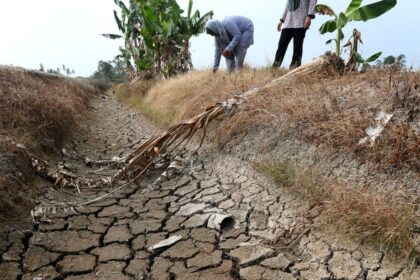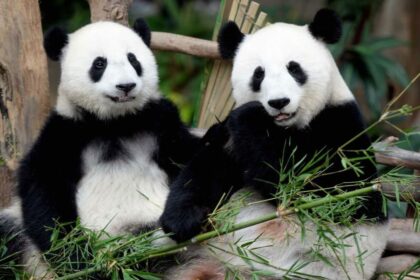A viral brew stirs debate in Beijing
An insect museum in Beijing has turned a standard cup of coffee into a conversation starter by topping it with ground cockroach powder and adding dried yellow mealworms. Priced at 45 yuan, about 6 dollars, the drink has become a social media sensation, drawing curious visitors and a flood of online reactions that range from amusement to outright disgust. Staff say the idea fits the museum’s focus on insects and was introduced at the end of June, only to surge in visibility weeks later after photos and short videos spread on Chinese social platforms.
The museum sells the brew inside its coffee shops and pairs it with a small menu of other nature inspired experiments. There is a coffee made with digestive juices from a pitcher plant, a seasonal drink that included ants around Halloween, and a version that showcases mealworms. Visitors who tried the cockroach coffee describe the flavor as burnt with a slight sour note, while the ant drink tastes more sour. The pitcher plant drink, according to staff, comes across like a regular coffee.
Only about ten cups of the cockroach version sell in a typical day, according to employees, and most buyers are young people who treat it like a dare or a one time badge of bravery. Families with children are more likely to pass, often because of a strong dislike of cockroaches. The museum says the insect ingredients are sourced from traditional Chinese medicine herb shops that provide processed powders and dried larvae, and it emphasizes that the products meet food safety standards.
What exactly is in the cup?
The team prepares the drink by grinding cockroaches into a fine powder, then sprinkling that powder over a hot coffee. Dried yellow mealworms are added for visual impact and texture. Some clips show the mealworms perched along the rim of the cup, while others show them mixed into the drink. The staff pitch it as an educational extension of the exhibits, a way to show visitors that insects can be part of a modern food conversation rather than only something to look at behind glass.
Taste and texture
People who tried the brew say the coffee leans bitter with a slightly sour edge. Several describe a nutty roast character underneath the initial shock factor, and a few compared the mealworms to a dry, biscuit like crunch. The ant themed drink reportedly carries a sharper sour taste. By contrast, the pitcher plant coffee is said to taste like a normal coffee, which makes the insect options the main source of novelty.
One influencer who recorded his tasting for followers said the experience was milder than the name implies. He introduced the video as a test of expectations and then offered a measured verdict.
“If you cover my eyes and do not tell me it is an insect, I will say it is not bad.”
Who is buying it, and why?
Sales are modest by standard cafe measures, yet the buzz is huge. Staff say the cafe sells around ten cups of the roach topped coffee daily, which suggests the drink functions more like a conversation piece than a volume seller. The 45 yuan price sits at a premium over a basic drip coffee, but the real draw is the story and the photo. Young adults dominate the customer base, often sharing the moment online, while many parents steer clear.
One museum employee framed the menu as an extension of the exhibits and a safe chance to rethink everyday assumptions about bugs in food.
“We launched this coffee at the end of June and it recently went viral. All insect ingredients comply with food safety standards and are the same processed items sold in traditional Chinese medicine shops.”
A Beijing blogger, Chen Xi, tried the drink on camera after viewers urged him to take the plunge. He said he braced for the worst, only to find the reality less shocking than the viral clips suggested.
“It is not as disgusting as I thought.”
Why insects are on the menu around the world
Eating insects, often called entomophagy, has a long history in many regions, including Southeast Asia, parts of Africa, and Latin America. Interest has risen in recent years because insects can provide dense protein, healthy fats, and micronutrients while using fewer resources than many traditional livestock. The United Nations food agency has highlighted the potential of insect farming to reduce pressure on land and water. Insects convert feed to protein efficiently, and some species can be raised on agricultural byproducts, which adds to sustainability goals.
There are practical points that matter for safety and taste. The species must be edible, the farming and processing must be controlled, and the final product must be handled and cooked properly. Many commercial insect foods are dried or roasted to lower microbial risk and to improve shelf stability. Some people with shellfish allergies can react to insects because both contain chitin and related proteins. That does not mean everyone will react, yet it is a reminder that insects are not a risk free novelty for every diner.
Cultural acceptance is often the largest barrier. For people who did not grow up with insects at the table, the mental hurdle can be bigger than any flavor challenge. This is why many chefs who experiment with insect foods try to pair them with familiar formats like tacos, pasta, or in this case coffee, so the base experience is recognizable while the topping introduces something new.
Coffee trends and the search for a viral hit in China
China’s coffee scene has been growing fast, and with growth has come an appetite for experiments. In recent months, cafes in different provinces have made news by adding deep fried worms to coffee in Yunnan and by pairing lattes with fried chili and hot pepper powder in Jiangxi. Drinks that sound shocking often travel quickly on video platforms, which rewards novelty and gives cafes and museums a low cost way to drive foot traffic.
Novelty marketing and cafe culture
Young urban consumers in China often treat coffee as a lifestyle product and a photo prop as much as a beverage. Limited runs, seasonal items, and conversation starters tend to sell out not because of taste alone, but because people want to say they tried them first. The insect museum’s lineup fits this dynamic. The cafe only sells about ten cups of the roach coffee daily, yet the online reach is far larger. That trade off can be attractive to a venue that values education, brand awareness, and ticket sales more than cafe volume.
There is also a practical reason to keep sales modest. Insect ingredients are harder to source consistently than standard coffee syrups or milk. Each cup requires extra preparation and staff training to answer safety questions. The result is an experience that feels rare, which feeds the viral loop and turns a niche drink into a steady stream of visitors who come to gawk, learn, or prove their daring in front of friends.
Safety, sourcing and what experts advise
The museum tells visitors that it buys insect products from traditional Chinese medicine suppliers, which sell processed powders and dried larvae for regulated uses. This matters because there is a difference between farmed insects that are prepared for consumption and household pests that carry unknown pathogens. Edible insect products are usually raised on controlled feed, then heat treated and dried. Coffee shops that use these items still need standard food safety practices, including careful storage and sanitation, just as they would for spices or tea leaves.
Claims about health benefits deserve careful framing. Traditional Chinese medicine texts and vendors attribute circulation support to cockroach powder and immune support to protein rich mealworms. These beliefs are part of a traditional practice. They are not the same as modern clinical evidence. A cup of coffee with insect powder should be treated like a novelty drink rather than a therapeutic product.
People who know they have shellfish allergies should be aware of possible cross reactivity with insect products and can ask staff about the ingredients before ordering. Anyone who is unsure about a new food can start with a small taste. The museum’s drinkers who go in prepared often report that the experience feels less shocking than the name suggests, which is part of why the story keeps spreading.
Key Points
- A Beijing insect museum sells a 45 yuan coffee topped with ground cockroach powder and dried yellow mealworms.
- The flavor is described by visitors as burnt with a slightly sour edge, while the ant drink is even more sour.
- The cafe launched the series at the end of June and sales average about ten cups daily, mostly to curious young adults.
- Staff say all insect ingredients are sourced from traditional Chinese medicine shops and meet food safety standards.
- The menu also features a coffee made with pitcher plant digestive juice and a seasonal ant drink offered around Halloween.
- Online reaction ranges from fascination to disgust, yet some tasters say the drink is milder than expected.
- The drink taps a wider trend in China, where cafes test bold combinations like deep fried worms or spicy latte mixes to spark viral attention.
- Edible insects can be a sustainable protein source, though people with shellfish allergies can react and should check ingredients before trying such items.











